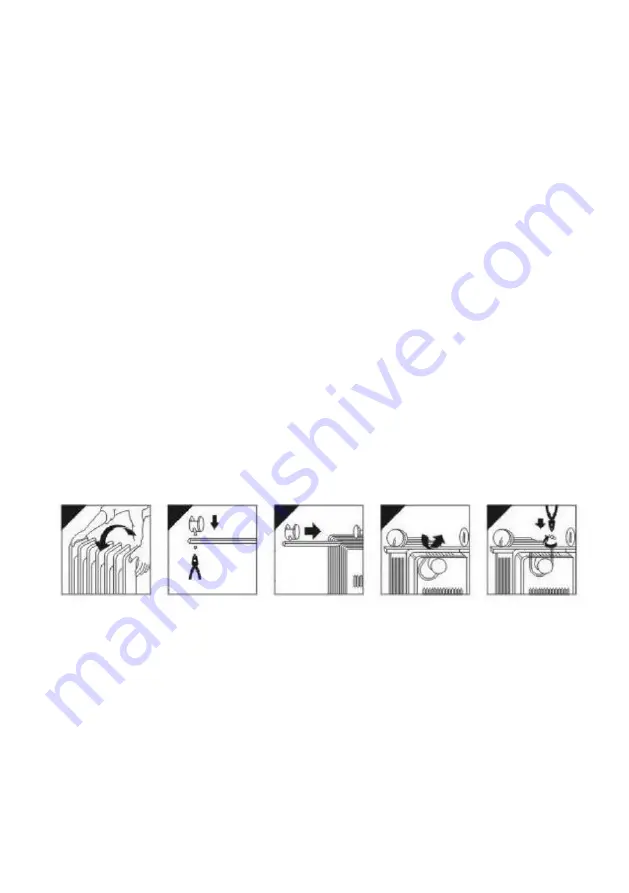
20
pins of the screws, insert them into the holes at the end of the bracket, position
the spring washers in place and turn the nuts in a clockwise direction to tighten
them properly.
2. Turn the radiator upside down and lay it on the ground on a cloth or other soft
surface, with the lower part facing upwards.
3. Insert the brackets with the assembled wheels in the lower part of the
radiator, moving them between the elements located at the far ends of the
radiator between:
- The last and second-last element
- The first and second element, so that the central holes of the cross bar line up
with the screws, as shown in the figure to the side.
Secure the brackets in place using the U-shaped hooks provided, making sure
that the cross bars are secured using the dedicated Wingnuts.
Thanks to the wheels, the radiator does not heat the surface on which it rests,
and air can circulate naturally. The radiator can be moved easily on its wheels,
using the folding handle at the top.
Attention:
for the first use, leave it operating at maximum power for at least two
hours. During this operation, ventilate the room well to eliminate the “new” smell
emanating from the appliance.




















